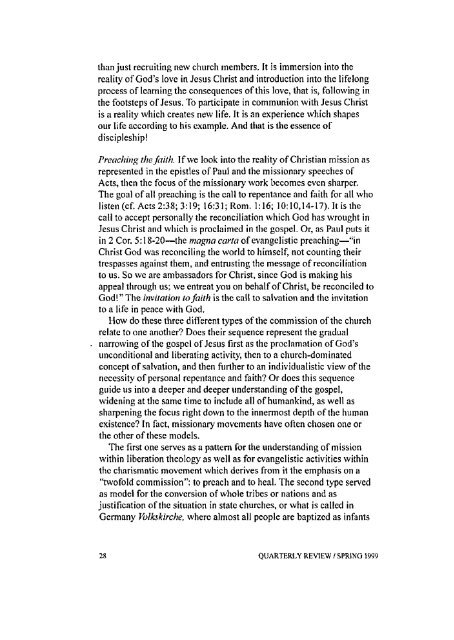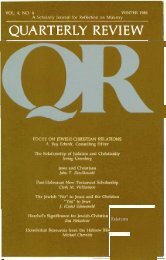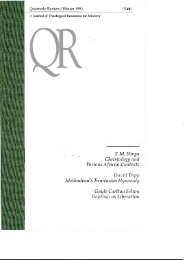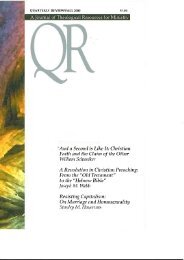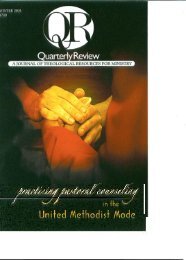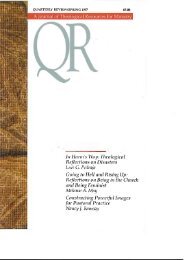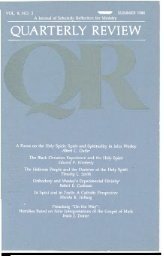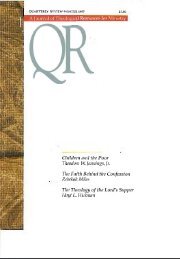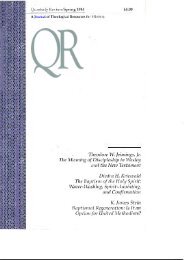Spring 1999 - Quarterly Review
Spring 1999 - Quarterly Review
Spring 1999 - Quarterly Review
Create successful ePaper yourself
Turn your PDF publications into a flip-book with our unique Google optimized e-Paper software.
than just recruiting new church members. It is immersion into thereality of God's love in Jesus Christ and introduction into the lifelongprocess of learning the consequences of this love, that is, following inthe footsteps of Jesus. To participate in communion with Jesus Christis a reality which creates new life. It is an experience which shapesour life according to his example. And that is the essence ofdiscipleship!Preaching the faith If we look into the reality of Christian mission asrepresented in the epistles of Paul and the missionary speeches ofActs, then the focus of the missionary work becomes even sharpenThe goal of all preaching is the call to repentance and faith for all wholisten (cf. Acts 2:38; 3:19; 16:31; Rom. 1:16; 10:10,14-17). It is thecall to accept personally the reconciliation which God has wrought inJesus Christ and which is proclaimed in the gospel. Or, as Paul puts itin 2 Cor. 5:18-20—the magna carta of evangelistic preaching—"inChrist God was reconciling the world to himself, not counting theirtrespasses against them, and entrusting the message of reconciliationto us. So we are ambassadors for Christ, since God is making hisappeal through us; we entreat you on behalf of Christ, be reconciled toGod!" The invitation to faith is the call to salvation and the invitationto a life in peace with God.How do these three different types of the commission of the churchrelate to one another? Does their sequence represent the gradualnarrowing of the gospel of Jesus first as the proclamation of God'sunconditional and liberating activity, then to a church-dominatedconcept of salvation, and then further to an individualistic view of thenecessity of personal repentance and faith? Or does this sequenceguide us into a deeper and deeper understanding of the gospel,widening at the same time to include all of humankind, as well assharpening the focus right down to the innermost depth of the humanexistence? In fact, missionary movements have often chosen one orthe other of these models.The first one serves as a pattern for the understanding of missionwithin liberation theology as well as for evangelistic activities withinthe charismatic movement which derives from it the emphasis on a"twofold commission": to preach and to heal. The second type servedas model for the conversion of whole tribes or nations and asjustification of the situation in state churches, or what is called inGermany Volkskirche, where almost all people are baptized as infants28 QUARTERLY REVIEW / SPRING <strong>1999</strong>


